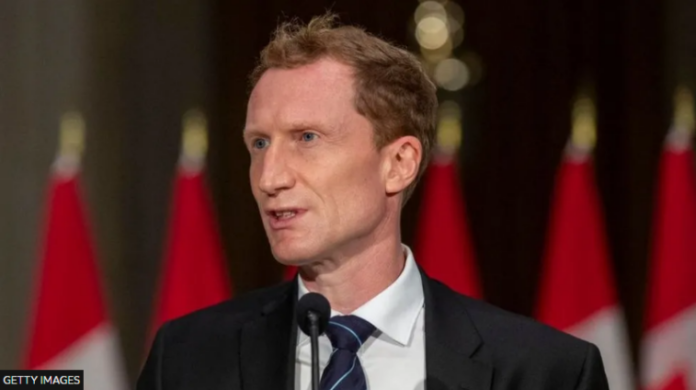Canada has said it will cap the number of foreign students admitted to the country for two years in an attempt to address pressure on housing and healthcare in the country.
The cap will result in a decrease of 35% in approved study permits.
Over 800,000 foreign students were in Canada in 2022, up from 214,000 a decade earlier.
The new measures are also meant to ensure the “integrity” of the system, officials said.
Immigration Minister Marc Miller announced the cap on Monday, saying that Canada aims to approve around 360,000 undergraduate study permits this year.
Each province and territory will be allotted a portion of that total, determined by population and current student intake. Provinces will then decide how to distribute these permits across their universities and colleges.
The cap will only apply to students at a diploma or undergraduate programme, and will not affect students applying for study permit renewals.
As part of the change, the government will also no longer – as of September – grant work permits for students graduating from colleges that operate under a public-private partnership model, which is most commonly found in the province of Ontario.
“It’s unacceptable that some private institutions have taken advantage of international students by operating under-resourced campuses, lacking supports for students and charging high tuition fees, all while significantly increasing their intake of international students,” Mr Miller said.
He said the the new measures are “not against individual international students” but are meant to ensure future students receive a “quality of education that they signed up for”.
The announcement also comes as the Trudeau government faces growing pressure to address an increasingly unaffordable housing market.
Home prices in Canada now average C$750,000 ($550,000;£435,000) and rent for Canadians has risen 22% in the last two years.
Some economists have linked housing unaffordability to a spike in immigration, as home construction has not kept up with Canada’s unprecedented population growth.
In 2022, the country grew by over a million people in the span of one year for the first time ever – a growth largely driven by newcomers. Last year Canada’s population hit a record of 40 million people.
The Canada Mortgage and Housing Corporation – a national housing agency – estimates that the country needs 3.5 million more housing units by 2030 to restore affordability.
While population growth is part of the problem, experts have pointed to other pressures driving down the number of housing starts, including high interest rates that make homes less affordable.
The cost of building materials also remains elevated due to inflation and supply chain disruptions from the Covid-19 pandemic.
The cap represents a significant shift in policy for Canada, which has historically relied on open immigration to fill job vacancies and address its rapidly-aging workforce.
Mr Miller had previously hinted at reducing the number of international students admitted to Canada, drawing concern from some Canadian universities.
Last week, president of McMaster University in Hamilton, just outside of Toronto, said a cap would mean “a loss” for his institution.
“If we lost our international students, we would not be as rich from a learning-environment perspective,” David Farrar told public broadcaster CBC in an interview.
He added that tuition paid by international students helps offset costs for some domestic students, as universities struggle with limited government funding and budgets.
A cap on international students, he said, would mean the university will have to cut the number of domestic students it admits.

